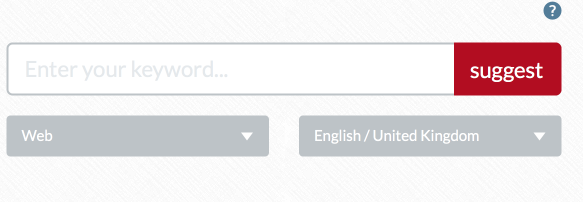Best Keyword Research Tools
As I talked about in my last post, Google’s algorithms have changed a lot over the years, no more is it just about keywords, but content and how good/relevant it is. Begging the question, what value do keywords hold now?
It’s true keywords don’t hold as much clout as they used to, but they are still required to help your content to appear relevant, which is what Google loves at this moment in time.
A lot of different factors come into play when researching keywords than just looking at exact-match keywords. Bounce-rates, expected CTR (click through rate) and volume of searches are just some of the areas that warrant attention before going ahead with a keyword.
What hasn’t changed is including the right keywords in meta descriptions, constantly monitoring and making judgments on your rankings and researching your competitors to get a sense of how they are performing on similar keywords.
3 Of The Best Keyword Research Tools Around:
WordStream

A great tool if you want thousands of results from a single search. WordStream gives you relative volume for each keyword, so you can see how many people are searching for that word and weigh up the pros and cons based on the data given. There are niche options and the ability to email all the keywords to you if required.
The only major problem with the WordStream tool is that relative volume is the only big metric that is analysable, which may not be enough for some users.
With WordStream you get 30 free searches with the keyword research tool, so there is no excuse to not give it a try. You may find it’s worth a great deal to your business.
Have a look: http://www.wordstream.com/keywords
Übersuggest

A free to use tool which is really simple but really effective. Übersuggest allows you to enter a word and pick the source (web, images, shopping, YouTube and news) and location from drop-down menus, if you are looking for something a little more specific. The results are laid out in alphabetic order, making it clearer for the reader.
But because it’s free tool, you don’t get any specific metrics or measurements in volume which may require a different tool if that is what you are looking for. Despite that being it’s only flaw, it is definitely one of the best tools on the market, it’s quick, easy-to-use, you get a ton of results and best of all it’s free!
Here is the link: https://ubersuggest.io/

There are different keyword research tools that Google offer. They bring something different to the table and best of all they are free.
Google Trends (above) shows the interest of certain topics over periods of time. Great if you need to see when certain keywords are in “fashion” so you can plan your campaigns accordingly. It can go more specific if needed, with trends in different countries and the ability to look at categories. For a free tool it is great for looking at current hot trends in the market which you could use to your benefit.
https://www.google.co.uk/trends/
The second tool is Google’s Keyword Planner (below). For really in-depth analysis of search volumes, Keyword Planner is great for analysing your competitors for similar search queries to your own. It is mainly built with Google Adwords in mind, but that doesn’t stop it from being a great tool nonetheless.

Summary
There is a simple rule I think should be adhered to when it comes to researching keywords. Pick the words that have low competition and high volume of searches. Of course other factors help to come to a decision, but that simple sentence helps to put keyword research into perspective.
All round I feel I have picked a good mixture of the best keyword research tools available today, giving you a lot of options to find the right keywords for your meta tags, content, ads and many more.
What do you think are the best keyword research tools that are out there? Have you tried any of the tools I have mentioned above? What do you think? Have they been useful?
Leave a comment and let me know
Have you seen some of our other content on Digital Web World:




